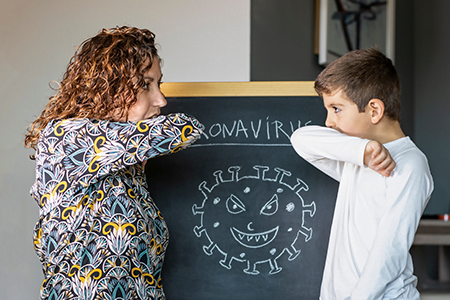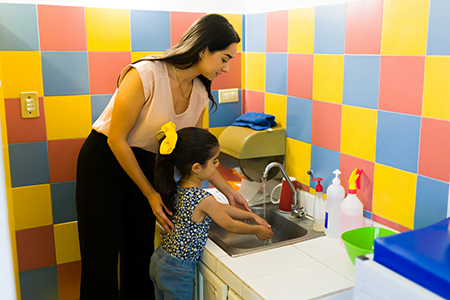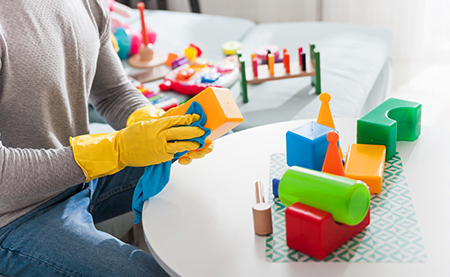Preventing and Managing Outbreaks
 Learning facilities, such as preschools and daycares, are bustling hubs of activity where children gather to learn and play. While these environments offer excellent opportunities for growth and development, they can also be breeding grounds for various health issues. To ensure a safe and healthy learning environment, it’s crucial to prevent and manage these health concerns. In this blog, we’ll explore strategies to protect learning facilities from outbreaks.
Learning facilities, such as preschools and daycares, are bustling hubs of activity where children gather to learn and play. While these environments offer excellent opportunities for growth and development, they can also be breeding grounds for various health issues. To ensure a safe and healthy learning environment, it’s crucial to prevent and manage these health concerns. In this blog, we’ll explore strategies to protect learning facilities from outbreaks.
Flu & Other Contagious Illnesses
Flu and other illnesses (such as the common cold, strep throat, and stomach viruses) can spread rapidly in learning facilities, given the close contact among children and staff. To minimize outbreaks and safeguard the health of all individuals:
- Vaccination: Encourage staff, students, and their families to get the annual flu vaccine.

- Hygiene practices: Teach proper handwashing techniques to all children and staff. Promote frequent handwashing and the use of hand sanitizers throughout the day, especially before meals and after using the restroom. Emphasize the importance of covering one’s mouth and nose when sneezing or coughing, using tissues or elbows to do so.
- Sanitization: Maintain a stringent cleaning regimen that includes daily disinfection of surfaces. Give special attention to high-touch surfaces like doorknobs, light switches, and classroom materials.
- Sick Policies: Implement clear guidelines for when children and staff should stay home when they are ill. Ensure parents are aware of these policies and adhere to them.
Lice Outbreaks
Head lice infestations are a persistent problem in schools and daycares. Lice are tiny insects that live on the human scalp and feed on blood. They can be incredibly itchy and uncomfortable, and their presence can disrupt a child’s learning experience. To prevent and manage lice outbreaks:
- Education: Educate parents and guardians about lice prevention and detection. Encourage them to regularly check their child’s scalp for signs of lice.
- Regular screenings: Periodic screenings for lice can help identify and isolate cases early, preventing further spread. School nurses or healthcare professionals can perform these checks.
- Cleanliness: Regularly wash bedding and stuffed toys. Promote cleanliness and discourage the sharing of personal items like hats, combs, and hairbrushes, which can spread lice. Consider hiring professional cleaning services to ensure a thorough and consistent cleaning regimen.
The Role of Cleanliness
 Cleanliness is a cornerstone of preventing and managing outbreaks in learning facilities. It:
Cleanliness is a cornerstone of preventing and managing outbreaks in learning facilities. It:- Reduces transmission
- Minimizes allergens
- Promotes hygiene
- Creates a positive learning environment
We need to protect learning facilities from outbreaks. This is essential for creating a safe and productive educational environment. Cleanliness is not just a matter of aesthetics but a vital component of maintaining the health of all individuals. Education and communication are key. The more we work together to instill good hygiene practices and enforce health policies, the better we can protect the well-being of our young learners!

 Cleanliness is a cornerstone of preventing and managing outbreaks in learning facilities. It:
Cleanliness is a cornerstone of preventing and managing outbreaks in learning facilities. It: